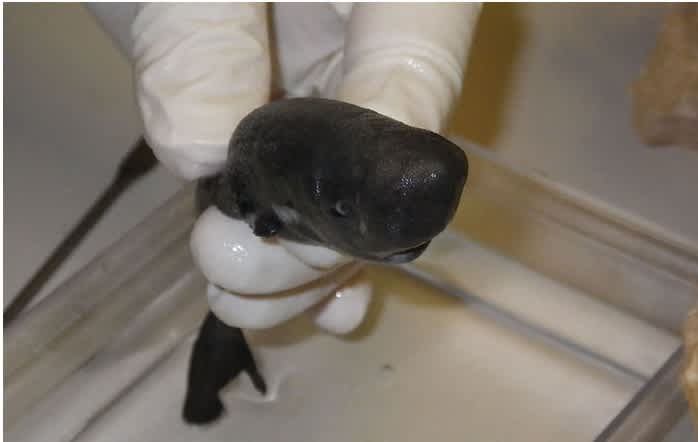Scientists Identify Rare Pocket Shark, a Bizzare Mix of Shark and Kangaroo
OutdoorHub Reporters 04.24.15

This rare and minuscule shark sat in a freezer for more than three years before it was finally identified by researchers. In 2010, biologists with the National Oceanic and Atmospheric Administration (NOAA) collected it during an expedition to study sperm whales in the Gulf of Mexico. Not sure what to make of the specimen, scientists sent it to a lab in Mississippi and put it on ice. There it sat in a freezer alongside other unidentified specimens until NOAA fisheries biologist Mark Grace pulled it out and let it thaw. It turns out that the tiny critter is a pocket shark, and it is only the second one ever found.
“It’s cute. It almost looks like a little whale,” Tulane University biologist Michael Doosey, who helped identify the animal and co-authored a study on the species alongside Grace, told the Associated Press.
Although it is tiny in comparison to its bigger cousins, the pocket shark is not actually named for its diminutive size. Instead, the species got its name because of two orifices behind its pectoral fin, pockets not unlike that of a kangaroo’s pouch. Scientists are still unsure what the shark uses the pockets for, but carrying young is a possibility. Since the specimen being studied is only a juvenile, researchers said there is still much that is to learn about this species.

“The pocket shark we found was only 5 and a half inches long, and was a recently born male,” Mark Grace said in a NOAA press release. “Discovering him has us thinking about where mom and dad may be, and how they got to the Gulf. The only other known specimen was found very far away, off Peru, 36 years ago.”
That specimen, a larger female at about 17 inches long, is now being kept in a Russian museum. Upon examination of the older pocket shark, researchers suspect that the pouches may be used to secrete some type of fluid or pheromones. The younger male, however, also had a series of glands that the older specimen did not have and researchers are still working to understand more about the shark’s anatomy. It is believed that pocket sharks prefer deeper waters, but experts have no estimate on how large their global population is.
“This record of such an unusual and extremely rare fish is exciting, but its also an important reminder that we still have much to learn about the species that inhabit our oceans,” Grace stated.

